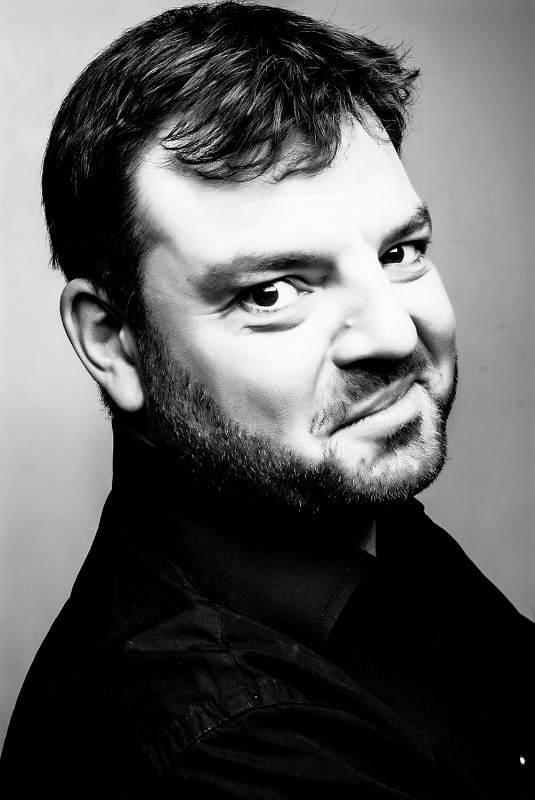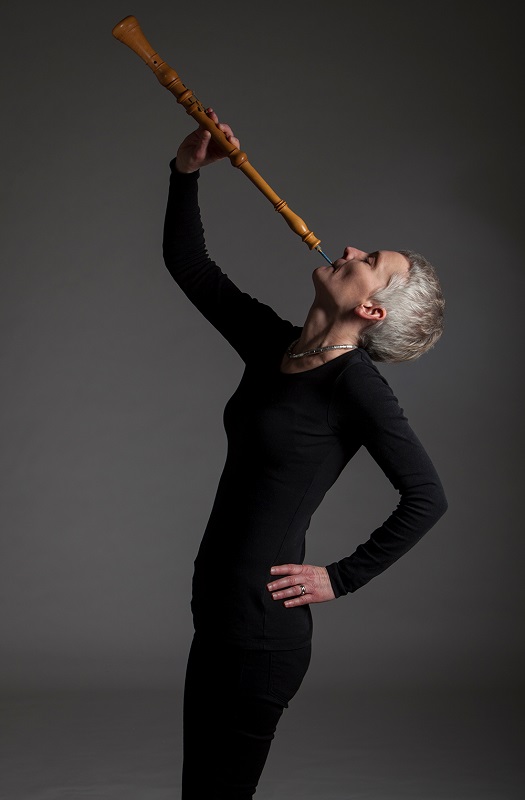Bach Brandenburg Concertos, OAE, Bridgewater Hall, Manchester | reviews, news & interviews
Bach Brandenburg Concertos, OAE, Bridgewater Hall, Manchester
Bach Brandenburg Concertos, OAE, Bridgewater Hall, Manchester
An evening of sheer enlightenment

Enlightenment is a wonderful idea, and the members of the Orchestra of the Age of Enlightenment who played Bach’s six Brandenburg Concertos in Manchester’s Bridgewater Hall last night brought the wisdom of today’s period instrument movement to bear on music that most would see as belonging to the age of the pre-Enlightenment.
The Orchestra of the Age of Enlightenment do that extremely well. The expertise of their techniques is unexceptionable, and even without violinist Pavlo Beznosiuk, who was to have taken a leading role in most of the concertos, the integration and balance of their one-to-a-part ensemble playing was well-nigh perfect. Huw Daniel – playing violin piccolo in the first concerto – stepped up to the plate to take on the other violin leading, too.
 "Authentic" performance canons have not changed that much in recent times, at least in some quarters. I remember the sense of discovery in hearing these pieces played by The Hanover Band, around 30 years ago, with similar approaches – and the realisation that in Baroque instrumentation all participants are pretty well equal in weight of tone, variety coming essentially from contrasts of colour. Even the high notes of the natural trumpet are little more dominant than the treble recorder or oboe, as the virtuoso-lipped David Blackadder and his colleagues proved in the second concerto (which was played last in this concert) – though he did turn to project across the platform rather than straight down the centre of the hall.
"Authentic" performance canons have not changed that much in recent times, at least in some quarters. I remember the sense of discovery in hearing these pieces played by The Hanover Band, around 30 years ago, with similar approaches – and the realisation that in Baroque instrumentation all participants are pretty well equal in weight of tone, variety coming essentially from contrasts of colour. Even the high notes of the natural trumpet are little more dominant than the treble recorder or oboe, as the virtuoso-lipped David Blackadder and his colleagues proved in the second concerto (which was played last in this concert) – though he did turn to project across the platform rather than straight down the centre of the hall.
Perhaps we are more enlightened now in our appreciation of the structural make-up of Bach’s movements: here there was no slamming on of the brakes to mark a double barline or emphasise a return to the home key, but rather a subtle drawing of a boundary, or a careful burgeoning of volume. Dynamics were not unvaried, by any means: even if Bach didn’t write the word crescendo, there are plenty of opportunities for creating the effect in his writing, and they were taken. Ornamentation was discreet, but often ingeniously present to enhance a melodious line.
The concert began with the first concerto, in which the horns brought an open-air atmosphere (perhaps as if heard coming from outdoors on a country estate) with their cross-rhythms in the opening movement. They were expertly played, and there was a very lively speed for the third movement (the first to be marked as Allegro). The polonaise section in the Menuet was a real let-your-hair-down moment, as if the wild men were taking over, if only briefly.
 The civilised string dialogues of the third concerto followed, with the cello lines delightfully articulated and the players’ enthusiasm creating what looked from the auditorium almost like a series of Mexican waves as the motives passed down the line. Harpsichordist Steven Devine (pictured above right) gave the tiny Adagio cadence just enough individuality and not too much, and the audience was thrilled by the speed of the final Allegro – though maybe that was just a bit too much of a rush to let every detail speak in this reverberant acoustic.
The civilised string dialogues of the third concerto followed, with the cello lines delightfully articulated and the players’ enthusiasm creating what looked from the auditorium almost like a series of Mexican waves as the motives passed down the line. Harpsichordist Steven Devine (pictured above right) gave the tiny Adagio cadence just enough individuality and not too much, and the audience was thrilled by the speed of the final Allegro – though maybe that was just a bit too much of a rush to let every detail speak in this reverberant acoustic.
Devine had his starring moment in the fifth concerto – no doubting the skill in his fingers there – though he took the chance of introducing rubato to such extent that it seemed almost out of character with the rest of the first movement. There was lovely playing from Lisa Beznosiuk (flute) and Huw Daniel in the Affetuoso movement, and a very spritely jig.
After the break the players resumed with concerto no. 4 (strings plus two recorders), with apt variations of dynamic in the first movement and giving Daniel the chance to demonstrate his skill in bariolage in the Presto. The sixth concerto, featuring violas, viole da gamba and the unusual small violone, was quietly beautiful, and its jig a more decorous affair this time.
They saved the second concerto for last, bringing on the trumpet for its exciting effect and giving the golden tones of oboist Katharina Spreckelsen (pictured above left by Eric Richmond) another spot in the limelight – all the solo roles were elegant in the slow movement, and the finale was jolly and confident enough to go for a near-throwaway ending.
rating
Share this article
The future of Arts Journalism
You can stop theartsdesk.com closing!
We urgently need financing to survive. Our fundraising drive has thus far raised £49,000 but we need to reach £100,000 or we will be forced to close. Please contribute here: https://gofund.me/c3f6033d
And if you can forward this information to anyone who might assist, we’d be grateful.

Subscribe to theartsdesk.com
Thank you for continuing to read our work on theartsdesk.com. For unlimited access to every article in its entirety, including our archive of more than 15,000 pieces, we're asking for £5 per month or £40 per year. We feel it's a very good deal, and hope you do too.
To take a subscription now simply click here.
And if you're looking for that extra gift for a friend or family member, why not treat them to a theartsdesk.com gift subscription?
more Classical music
 Solomon, OAE, Butt, QEH review - daft Biblical whitewashing with great choruses
Even a top soprano and mezzo can’t make this Handel paean wholly convincing
Solomon, OAE, Butt, QEH review - daft Biblical whitewashing with great choruses
Even a top soprano and mezzo can’t make this Handel paean wholly convincing
 Two-Piano Gala, Kings Place review - shining constellations
London Piano Festival curators and illustrious friends entertain and enlighten
Two-Piano Gala, Kings Place review - shining constellations
London Piano Festival curators and illustrious friends entertain and enlighten
 Echo Vocal Ensemble, Latto, Union Chapel review - eclectic choral programme garlanded with dance
Beautiful singing at the heart of an imaginative and stylistically varied concert
Echo Vocal Ensemble, Latto, Union Chapel review - eclectic choral programme garlanded with dance
Beautiful singing at the heart of an imaginative and stylistically varied concert
 Scott, Irish Baroque Orchestra, Whelan, RIAM, Dublin review - towards a Mozart masterpiece
Characteristic joy and enlightenment from this team, but a valveless horn brings problems
Scott, Irish Baroque Orchestra, Whelan, RIAM, Dublin review - towards a Mozart masterpiece
Characteristic joy and enlightenment from this team, but a valveless horn brings problems
 Classical CDs: Voice flutes, flugelhorns and froth
Baroque sonatas, English orchestral music and an emotionally-charged vocal recital
Classical CDs: Voice flutes, flugelhorns and froth
Baroque sonatas, English orchestral music and an emotionally-charged vocal recital
 Kanneh-Mason, Britten Sinfonia, Shave, Milton Court - a grin and a big beaming smile
A pair of striking contemporary pieces alongside two old favourites
Kanneh-Mason, Britten Sinfonia, Shave, Milton Court - a grin and a big beaming smile
A pair of striking contemporary pieces alongside two old favourites
 theartsdesk at the New Ross Piano Festival - Finghin Collins’ musical rainbow
From revelatory Bach played with astounding maturity by a 22 year old to four-hand jazz
theartsdesk at the New Ross Piano Festival - Finghin Collins’ musical rainbow
From revelatory Bach played with astounding maturity by a 22 year old to four-hand jazz
 First Person: Manchester Camerata's Head of Artistic Planning Clara Marshall Cawley on questioning the status quo
Five days of free events with all sorts of audiences around Manchester starts tomorrow
First Person: Manchester Camerata's Head of Artistic Planning Clara Marshall Cawley on questioning the status quo
Five days of free events with all sorts of audiences around Manchester starts tomorrow
 Goldscheider, Brother Tree Sound, Kings Place review - music of hope from a young composer
Unusual combination of horn, strings and electronics makes for some intriguing listening
Goldscheider, Brother Tree Sound, Kings Place review - music of hope from a young composer
Unusual combination of horn, strings and electronics makes for some intriguing listening
 theartsdesk Q&A: composer Donghoon Shin on his new concerto for pianist Seong-Jin Cho
Classical music makes its debut at London's K-Music Festival
theartsdesk Q&A: composer Donghoon Shin on his new concerto for pianist Seong-Jin Cho
Classical music makes its debut at London's K-Music Festival

Add comment